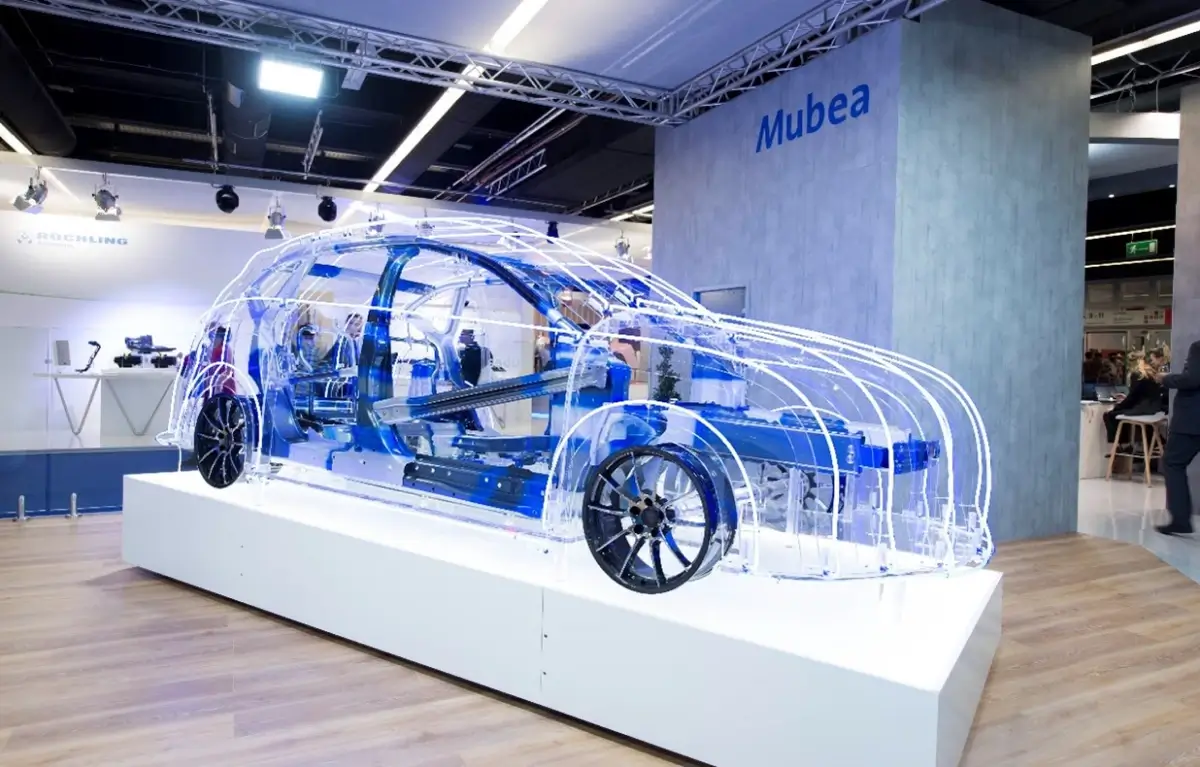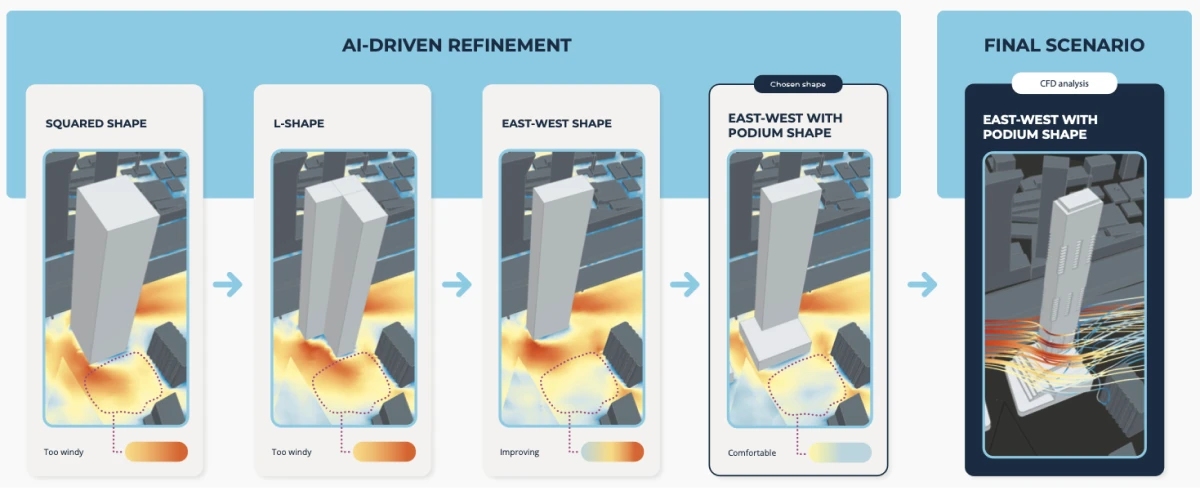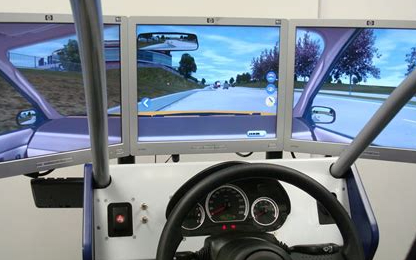How to Implement Sustainable Automotive Solutions in 2024

The car industry is at a turning point right now:
- increasing pressure by public awareness of climate change,
- ever new government restrictions,
- and consumer preferences shifting to new concepts such as a “sustainable future.”
Such pressure on automakers would have been a nightmare for the old automotive playbook. Fortunately, today's car manufacturers are rethinking strategies. A revolution in the industry required more than declarations of intentions. Robust technical advancements and new business models had to align. How are automotive companies on the track of sustainability, and how much work remains to be done on innovative practices?
We will talk about electric vehicles, the circular economy, and the role of AI in the automotive industry.
The Automotive Industry’s Need to Shift to a Sustainable Future
25% or more of carbon dioxide and other greenhouse gas emissions come from the transportation sector. Since gases generated by internal combustion engine vehicles contribute to climate change, car companies are working to fight climate change and cut emissions, focusing on solutions to shrink cars’ carbon footprint throughout the whole vehicle life.
Electric Vehicles (EVs) are part of this revolution to implement sustainable solutions.

Carbon Footprint and Past Examples of Technology Solutions
As we have seen, carbon emissions (CO₂) constitute a significant concern in the car industry. The new buzzwords are climate change and global environmental targets. In the past, car manufacturers' solutions involved highly complex exhaust systems produced by their "Tier-1" suppliers. Early technologies, such as particulate filters and catalytic converters, evolved into costly and complex “mini chemical plants” embedded in vehicles that could not 100% eliminate emissions!

The shift toward hybrid and electric vehicles (EVs) and improved manufacturing processes has become the leading modern solution. This transition offers a more effective and sustainable path to reducing emissions across the car industry sector.

Going Electric in the Automotive Industry: the Battery
Even though the electric vehicle's battery is still a heated topic (it is claimed to explode, leave people on foot in the middle of deserts, etc.!), it still represents the most critical advancement in sustainable automotive engineering. What is this core technology behind Electrical Vehicles (EVs) specifically? We will focus on the heart of the powertrain system, its pros, and its cons.

Electric vehicles would, of course, be unimaginable without Li-ion batteries! Li-ion offers high energy density and long life cycles. Li-Ion batteries can store more energy per unit weight or volume than other types. The secret is a high electrochemical potential. High energy density means a more extended driving range on a single charge, which is critical for practical use. A battery can usually go through over 1,000 cycles, so you won’t have to replace it as often. This, of course, reduces the negative impact of battery disposal and manufacturing. Batteries’ production and disposal present environmental challenges, requiring attention throughout the value chain, for instance, with sustainable practices in Lithium mining. Moreover, improving manufacturing efficiency and advancing recycling technologies are part of the picture.
Implementation Across the Automotive Industry Value Chain
It is important not to focus only on technological improvements in the vehicle and its components. Implementing sustainable solutions in the automotive industry involves a comprehensive approach that spans the value chain end-to-end, encompassing engineering operations but also involving other roles. The "green" transformation includes everyone in the automotive industry, from those working on sourcing raw materials to staff in manufacturing, distribution, and end-of-life management.
Automotive manufacturing practices must be reevaluated to reduce waste and improve efficiency. This includes adopting the circular economy principles, which focus on reusing and reusing materials to minimize production waste. Renewable energy sources, such as wind power, should be integrated into manufacturing facilities. With so-called "green" energy solutions, manufacturers reduce emissions and align with sustainability strategy.

Adapting the Business Model for Sustainability in the Automotive Industry
Automotive companies must adapt their business models to sustainable solutions. This means rethinking traditional approaches to profitability and efficiency and shifting to sustainability for the future.
Business performance is assessed beyond mere profitability and reduction of costs. What is the global cost of an unsustainable solution? Society and governments are putting pressure on corporations. Thus, overall impact and adherence to sustainability goals are taken into consideration. Companies are now evaluated based on their environmental impacts, financial profitability, and how they implement their green practices.
Market preferences lead towards environmentally friendly products and services. Thus, they influence companies to prioritize future sustainable vehicles.
The Role of the Supply Chain in Sustainable Automotive Solutions
The concept of a "circular economy" forces supply chains to think about reusing and recycling materials instead of a "linear economy" from birth to death!
OEMs in the automotive industry collaborate with suppliers on sustainability practices and share best practices across the value chain.

The Circular Economy and Sustainability - Principles
The circular economy is critical to achieving greater sustainability in the automotive sector and companies in the future. This model emphasizes reuse and recycling, a more responsible disposal of materials than in the past.
Automotive companies can adopt circular economy principles such as:
- by producing vehicles with recyclable materials,
- with take-back programs,
- and investing in recycling technologies.
Let us now examine how cars can be designed with Artificial Intelligence (AI) solutions for new features such as autonomous driving with safety, but also towards sustainability by reducing environmental impacts and helping the infrastructure.
AI in the Automotive Sector
AI can improve the efficiency of cars during early design or concept work, like aerodynamics simulation before a prototype is built. Two areas within AI are Machine Learning (ML) and Deep Learning, which perform tasks that typically require human intelligence. These include learning from experience, understanding natural language, or pattern recognition.

Take Tesla’s Autopilot as an example: self-driving tech relies on AI to work magic. Smart computer programs process information from sensors and cameras to grasp what’s happening around the vehicle and make split-second driving decisions. AI helps to read sensors safely, cruise safely, adjust speeds, and avoid obstacles.

However, AI also excels in improving design and manufacturing processes. It can predict how a component will behave in terms of the safety of components during a crash or quality of aerodynamics when equipment fails, optimize supply chains, and reduce production waste.
Enter Machine Learning (ML) and Deep Learning
In ML, algorithms are trained to make predictions based on data. Deep Learning, a subset of machine learning, involves neural networks with neuron layers dedicated to recognizing images or other inputs. This approach processes complex data, such as 3D CAD or CFD simulations, and can extract meaningful features, such as engineering predictions, starting from raw input in 3D Deep Learning.
Predictive Maintenance and AI
Predictive maintenance means “know when stuff before it breaks.” This is an ideal task for AI. AI can read data from machine sensors and advise based on predictive models that are “digital twins” of the real-world operating machine or manufacturing plant. Plus, AI makes production more efficient by scheduling activities and handling inventory.
AI Applications in Automotive Engineering
In Artificial Intelligence Engineering, AI has several other applications. With AI, we can monitor and improve battery performance. This includes predicting when the battery needs a charge and adjusting charging rates based on drivers’ habits and the environment. This helps the battery last longer and makes the vehicle more efficient. AI can also help manage energy use in EVs by controlling operations like air conditioning and regenerative braking to go further on each charge.

Other AI Insights for Sustainability
Additionally, AI can give us valuable insights into the whole automotive process. By looking at the data, AI can find inefficiencies like too much stock or transportation delays and suggest improvements. This can help us reduce the carbon footprint caused by moving vehicles around.
AI can help select eco-friendly raw materials, making recycling more efficient. For example, think about an electric vehicle with a smart battery management system with ML algorithms to
- monitor the battery condition,
- how charged it is,
- how it is used.
Based on this, ML can predict when the battery will need a charge based on what it’s learned. So, if it sees that the vehicle is usually used for shorter trips, it’ll adjust the charging plan to stop the battery from getting overcharged. This will help the battery last longer and make the vehicle more efficient.
Challenges and Future Directions in Sustainability
Several challenges remain in implementing sustainable solutions. The world can benefit from sustainable practices only with massive investments in new technologies and infrastructure. Developing and deploying those new technologies for sustainable vehicles (EV batteries or self-driving cars) is a tough job involving overcoming technical challenges and ensuring compatibility with existing systems.
Also, it is true that there is a global trend toward sustainability. However, technologies must be friendly in terms of costs and performance topics such as autonomy and safety to meet consumer acceptance. Automotive companies innovate and collaborate with suppliers to address the above and other challenges by leveraging and sharing technological advancements and adopting sustainable practices. For instance, the industry can make significant strides toward sustainability by sharing data between OEM and Tier-1 suppliers.
Conclusion
Implementing sustainable solutions is a complex effort that requires a 360-degree approach encompassing technological advancements and supply chain optimization. There are at least three keys for companies to achieve their goals and align with evolving market and technology trends:
- focusing on electric vehicles,
- reducing carbon emissions,
- embracing the circular economy.
Through efforts, the automotive industry can pave the way for a cleaner, greener future for cars, benefiting the environment and our societies.



